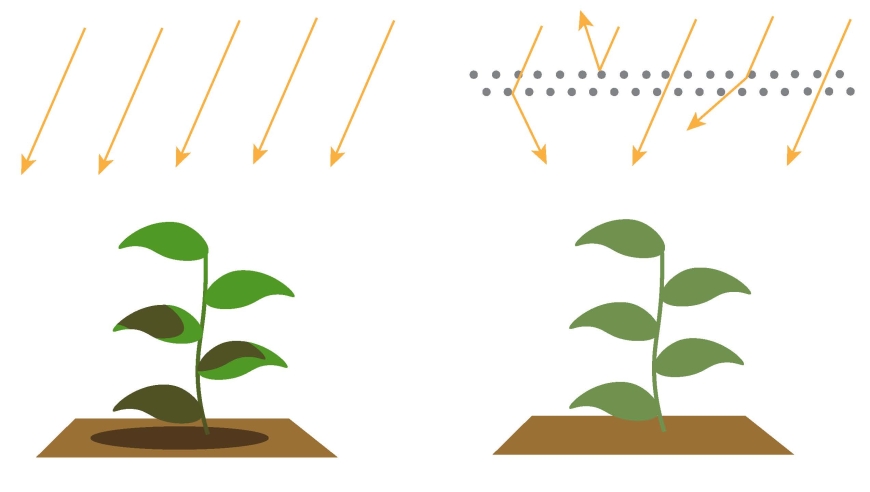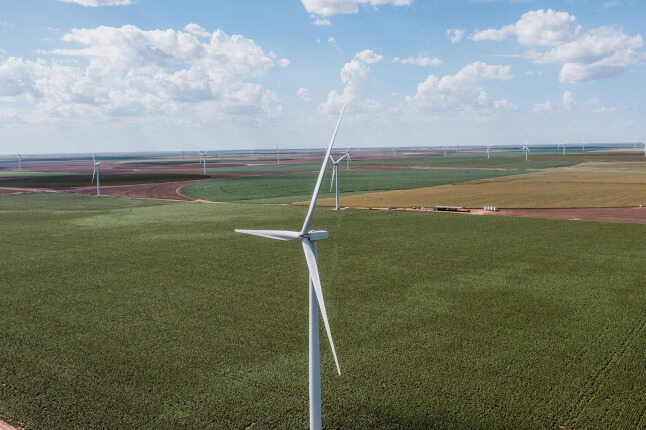News
Researchers have long known that extreme temperatures and drought have a major impact on crop yield, but what about extreme sunlight?
Emissions of particulates and greenhouse gases are changing the amount of sunlight scattered and absorbed in the atmosphere, both directly and indirectly, by altering clouds. We know that crops need sunlight to grow, but exactly how much sunlight and of what type (color, directionality) is unknown. The question is, what will changes in sunlight mean to crop yields worldwide?
“Understanding how crops respond to changes in the quantity and quality of sunlight could help inform how air pollution, climate change and geoengineering might influence global agriculture,” said Jonathan Proctor, a postdoctoral fellow at the Harvard Data Science Initiative and the Harvard Center for the Environment.
On a clear day (left) light comes directly from the sun, brightly illuminating the leaves at the top of the canopy and shading the leaves below. On a cloudy day (right) some incoming light is scattered, which reduces the total amount of light but redistributes the remaining light more evenly across the leaves. (Image courtesy of Jonathan Proctor/Harvard SEAS)
Download Image
Proctor is a postdoctoral fellow in the lab of Peter Huybers, Professor of Earth and Planetary Sciences and of Environmental Science and Engineering at SEAS.
Recently, Proctor published a paper in Nature Food that explores the relationship between sunlight and crop yield. He found that crop yields are highest within a Goldilocks zone of sunlight, in which clouds block about half of the incoming light. Proctor looked at corn and soybean production in United States, Brazil, China and the European Union and found that the optimal growing zone is remarkably consistent across crops and regions.
“These findings suggest that corn and soybeans prefer a Goldilocks-medium amount of light, peaking in productivity when clouds block about half of the available sunlight,” said Proctor. “This is the first empirical estimate of how changes in clouds impact agricultural productivity at an international scale.”
Proctor first studied how clouds influence the quantity and quality of sunlight using a global network of sunlight-measuring stations. Then, he analyzed over 250,000 observations of crop yield and weather data. He found that even just one additional day of Goldilocks cloud cover, compared to a cloudless day, increased annual maize and soy yields by half a percent.
He also found that changes in sunlight due to changes in clouds from air pollution have decreased global average maize and soy yields by 1% and 0.1% by changing beneficial medium-thick clouds into damaging extremely thick clouds. These impacts are concentrated in heavily polluted areas, such as China, where maize and soy yields are reduced by 2.7% and 1.1%, totaling $1.8 billion per year of lost production.
Proctor further estimates that climate change may decrease corn and soybean yields by 1.8% and 0.4%. These effects that are modest relative to those of changes in temperature and water availability globally, but have regional impact.
“It’s important to understand how emissions are impacting our well-being, now and in the future,” Proctor said. “How air pollution influences cloud distributions, which in turn impact crop yields is something we should consider when making air pollution policy.”
This research was supported in part by then National Science Foundation Graduate Research Fellowship under grant no. DGE 1752814.
Topics: Climate, Environment
Cutting-edge science delivered direct to your inbox.
Join the Harvard SEAS mailing list.
Press Contact
Leah Burrows | 617-496-1351 | lburrows@seas.harvard.edu



